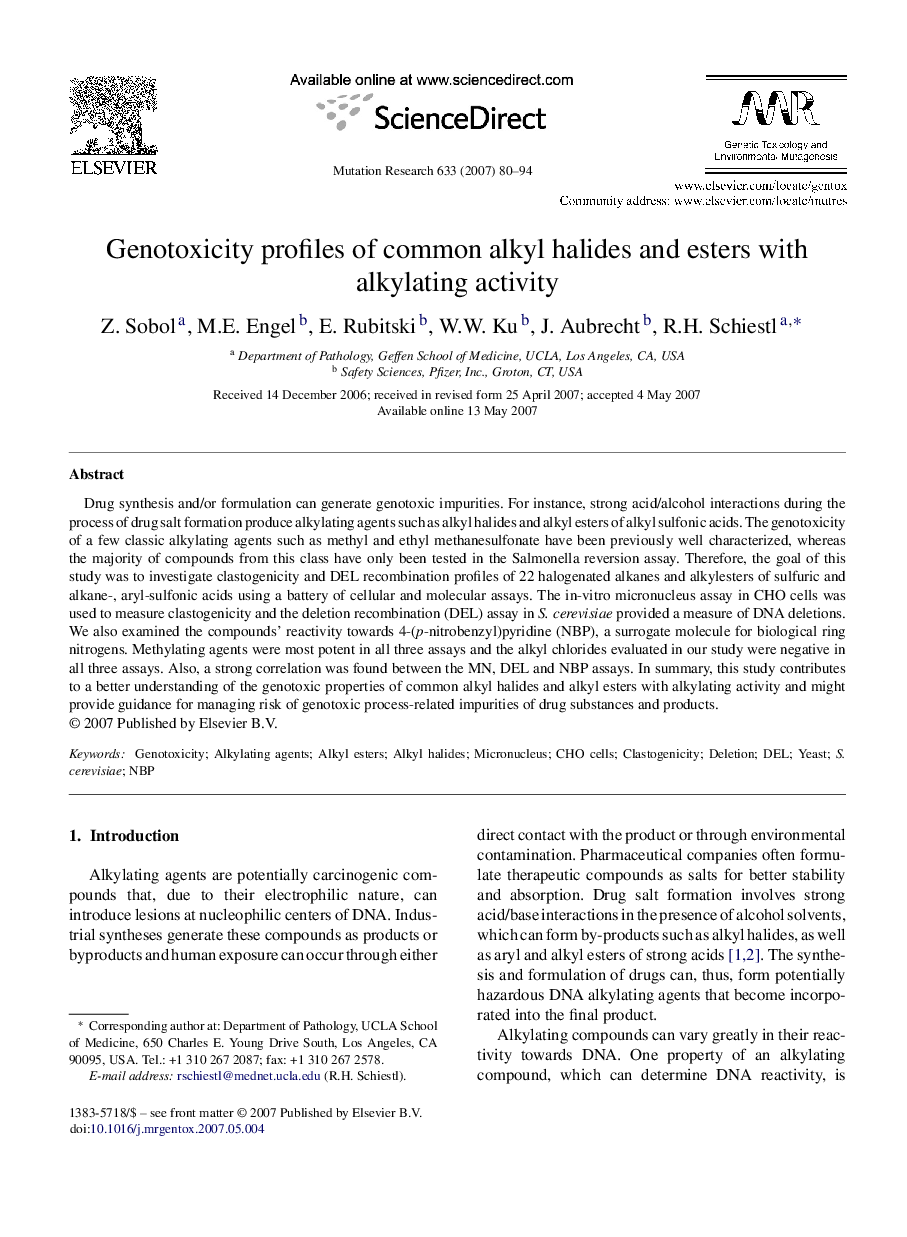| Article ID | Journal | Published Year | Pages | File Type |
|---|---|---|---|---|
| 2149116 | Mutation Research/Genetic Toxicology and Environmental Mutagenesis | 2007 | 15 Pages |
Drug synthesis and/or formulation can generate genotoxic impurities. For instance, strong acid/alcohol interactions during the process of drug salt formation produce alkylating agents such as alkyl halides and alkyl esters of alkyl sulfonic acids. The genotoxicity of a few classic alkylating agents such as methyl and ethyl methanesulfonate have been previously well characterized, whereas the majority of compounds from this class have only been tested in the Salmonella reversion assay. Therefore, the goal of this study was to investigate clastogenicity and DEL recombination profiles of 22 halogenated alkanes and alkylesters of sulfuric and alkane-, aryl-sulfonic acids using a battery of cellular and molecular assays. The in-vitro micronucleus assay in CHO cells was used to measure clastogenicity and the deletion recombination (DEL) assay in S. cerevisiae provided a measure of DNA deletions. We also examined the compounds’ reactivity towards 4-(p-nitrobenzyl)pyridine (NBP), a surrogate molecule for biological ring nitrogens. Methylating agents were most potent in all three assays and the alkyl chlorides evaluated in our study were negative in all three assays. Also, a strong correlation was found between the MN, DEL and NBP assays. In summary, this study contributes to a better understanding of the genotoxic properties of common alkyl halides and alkyl esters with alkylating activity and might provide guidance for managing risk of genotoxic process-related impurities of drug substances and products.
